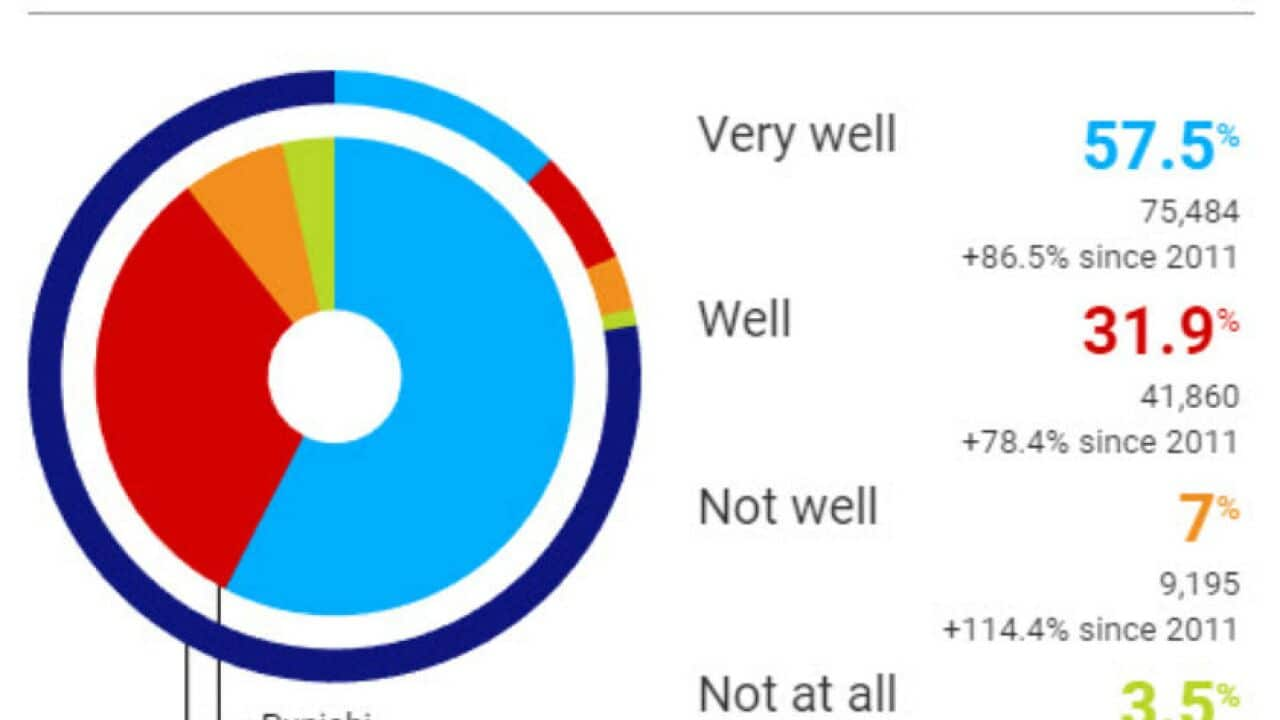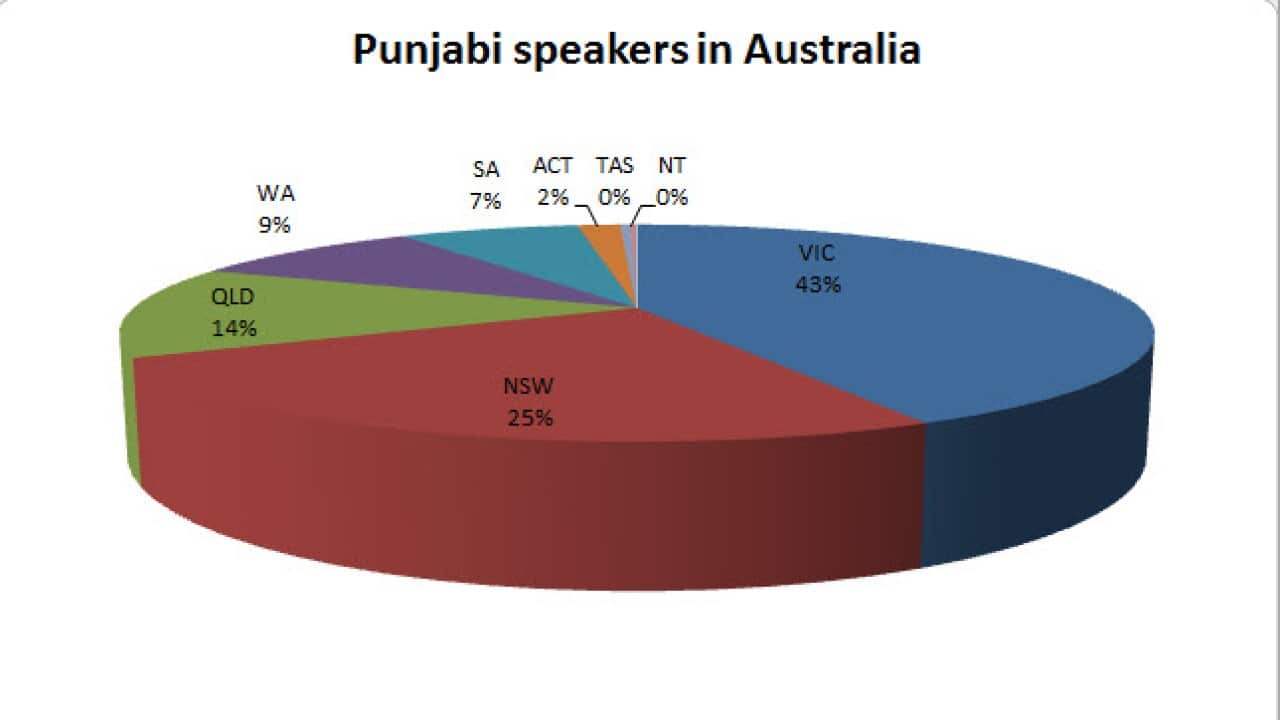In a fascinating conversation with SBS Punjabi, the Australian Sikh Heritage Association's Tarunpreet Singh reveals how he discovered "a Punjab right here in Australia - which you can visit without boarding a ship or taking your passport along."
"This is probably the best new year gift for our community, to feel proud that Sikh history has documented evidence of its presence and influence in Australia since the 1880's.
"In fact this may probably be the only Punjab outside of our homeland."

More information about the Australian land of five rivers called Punjaub, in Queensland Source: Supplied

The references to the five rivers that flowed through the Australian Punjab Source: Trove
It was sold by SG Watson, Esq of Melbourne. "It had a homestead, which probably even had a commercial purpose where people could stay for holidays," says Mr Tarunpreet Singh.
There is at least one reference of a couple heading to Punjaub for their honeymoon. Apart from being known as a major cattle station in the area, Punjaub boasted of a very fertile land, covered in orchards of fruit trees including "orange, lemon, mandarin, comquat, guava, mango, mulberry, banana and fig."
Apart from being known as a major cattle station in the area, Punjaub boasted of a very fertile land, covered in orchards of fruit trees including "orange, lemon, mandarin, comquat, guava, mango, mulberry, banana and fig." Sharing all of this information with SBS Punjabi, Mr Tarunpreet Singh said, "It is quite clear that there was Sikh presence in Queensland and adjoining areas in the mid- late 1800s. In fact we know that out of the 19 members in the Burke and Wills Expedition of 1860–61, there were 4 Afghans.
Sharing all of this information with SBS Punjabi, Mr Tarunpreet Singh said, "It is quite clear that there was Sikh presence in Queensland and adjoining areas in the mid- late 1800s. In fact we know that out of the 19 members in the Burke and Wills Expedition of 1860–61, there were 4 Afghans.

The Punjaub homestead in Queensland Source: Trove

A description of the Punjaub cattle station in a newspaper article published in 1881 Source: Trove
"It started from Melbourne to Gulf of Carpentaria.
"The expedition had a massive camel called Golah Singh – which creates interest that there could be a Sikh cameleer among these Afghans."
Could he possibly have inspired the name Punjaub?
"I'm currently trying to get in touch with Mr Kennedy, the current owner of the property, to see if he can shed light on how the name came about," says Mr Tarunpreet Singh.
"Not only this, but many people in the indigenous community of Mt Isa, actually go by the surname Punjaub, much like villagers in the Indian Punjaub tend to do - they usually take the name of their village as their surname."
For example, this in the North West Star shows a picture of some indigenous children of Mt Isa, with the surname Punjaub. There are more articles, including one by the , which features children from Mt Isa with the surname Punjaub.
There are more articles, including one by the , which features children from Mt Isa with the surname Punjaub.

Some Mt Isa children featured in a newspaper article, who have the surname Punjaub Source: The North West Star
What's more, the adjoining estate is named 'Almora', which further deepens the connection of the Australian Punjaub with the Indian Punjab - both are named so because they are the land of five rivers, and both have an adjoining land called "Almora".
Mr Tarunpreet is exploring further avenues to find out how the Australian Punjaub earned its name, and to unearth another chapter of Australian Sikh heritage.
"The more we know about our history in Australia, the more at home we'll feel - and of course, we will be able to celebrate our rich heritage in Australia."
*PLEASE NOTE: There seems to be a discrepancy in the names of the rivers that flow through the Punjaub station in Queensland. Almost every newspaper article mentioning Punjaub, published between 1873 and 1922, clearly states that the station derived its name from the fact that it is the ‘district of five rivers’ and each of these articles in the Australian archives names Logan, Albert, Pimpania, Coomera and Nerang as the five rivers rivers that run through Punjaub station. But the current maps of Queensland clearly show that these five rivers flow through the Gold Coast, and not through the Punjaub station, which is close to the Gulf of Carpentaria. The most recent map shows the rivers Gregory, Nicholson, Bearnes Brook, One Mile Creek and Archie Creek traversing the Punjaub station in today’s Queensland. Both Bearnes Brook and One Mile Creek flow into the Albert river (which is different from the Albert river in the Gold Coast.) Archie Creek flows into the Gregory River, which is the major river that flows through the Punjaub station of Queensland.
More articles and interviews from SBS Punjabi

'We've called New Zealand home for nearly 100 years now', says Joginder Singh







